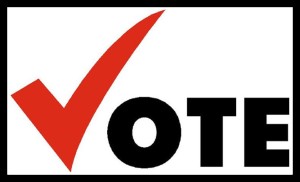 Leadership is not a position, it is an attitude. It comes from inside. I don’t know who coined this phrase but I love it, which is why I have stolen it for my next sentence.
Leadership is not a position, it is an attitude. It comes from inside. I don’t know who coined this phrase but I love it, which is why I have stolen it for my next sentence.
Being a change agent is not a position, it is an attitude. And not only is it an attitude but a skill. Every manager at every level should possess a change attitude and the skills that need to go with it.
It’s not a nice to have. It’s a need to have. In a world where we expect change to constantly bombard us, we need people who have the right attitude and the right skills.
Sure, you say, it’s hard to argue with that. But how do we get there? Yes, yes. How? That is indeed a good question. I’m sure there are many good answers.
I’m going to skip all the vision and mission jabber, not because I don’t think it is important but because wiser people than I have expounded on that. I’ll make the assumption that we have one.
I was going to launch into my typical angle of needing to train people on continuous improvement and feedback loops and theory of constraints and so on. Then I thought, no, those are tools. And the tools I might use might be different than yours, which am sure are good too. And tools are always subject to context. Don’t want to get into those weeds. So let’s not go there. Hmm. So where do we start?
Architecture. That’s it! Just like a computer system needs a good architecture. Just like a building needs a good architecture. A management system needs a good architecture.
So back to the question of how. If we want managers to have the change agent attitude and skills then it must be part of the management architecture.
Now just like a system’s architecture is dependent on the role the software needs to play, management architecture will depend on the needs of the business so no two would or should be the same. But if I were developing a management architecture for the modern world where change is constant I might include some key structural building blocks. Some basic expectations of capability and attitude that would allow the system to run efficiently. Here we go.
- Systems Thinking – You Are Not Alone
- This is a three for one.
- If your managers don’t know about systems thinking, educate them. The understanding of context is crucial to interacting with the world around you.
- Require them to understand the world around them. A thorough understanding of the processes that impact them and the process that they impact.
- Systems thinking means people will question the world around them. This has to be encouraged and supported.
- What is Systems Thinking? Here’s a primer. http://serc.carleton.edu/integrate/teaching_materials/systems_what.html
- This is a three for one.
- Support Role – Why You are Here
- Unless you are creating value, creating output, you are support.
- This means your role is to make sure that all processes related to that are efficient and accurate.
- Your role is to remove barriers to production and work toward continuous improvement.
- Everything else is secondary. Everyone has to understand this.
- Prioritizing – What Needs to be Done
- What has to be done? See Support Role.
- Ongoing assessment of tasks that force themselves down the chain.
- Anything that gets in the way of the support role must be questioned.
- This questioning must be encouraged.
- Have to agree that some things will not get done. Everyone has to accept this. No piling on.
- On Prioritizing: http://optimizebusinessresults.com/setting-priorities-effectively-first-clear-the-organizational-clutter/
- Change Management – It’s the People
- You are not managing processes you are managing people.
- You are helping people perform to meet the needs of the organization.
- Learn it, live it, love it. Understand the human condition. Motivations, habits, behaviors.
- Relationship Management. Build trust and you build willingness.
There you have it. Some basic conditions and attributes of a management architecture that will allow you to more systemically approach change and many other business challenges. Give your people this knowledge and these expectations. Give them a strong base of support to stand on.
And especially give these attributes to yourself. Perhaps this is where the “leadership is an attitude” comes in.
And just because it came to mind, a little Pete Townshend digging away.













